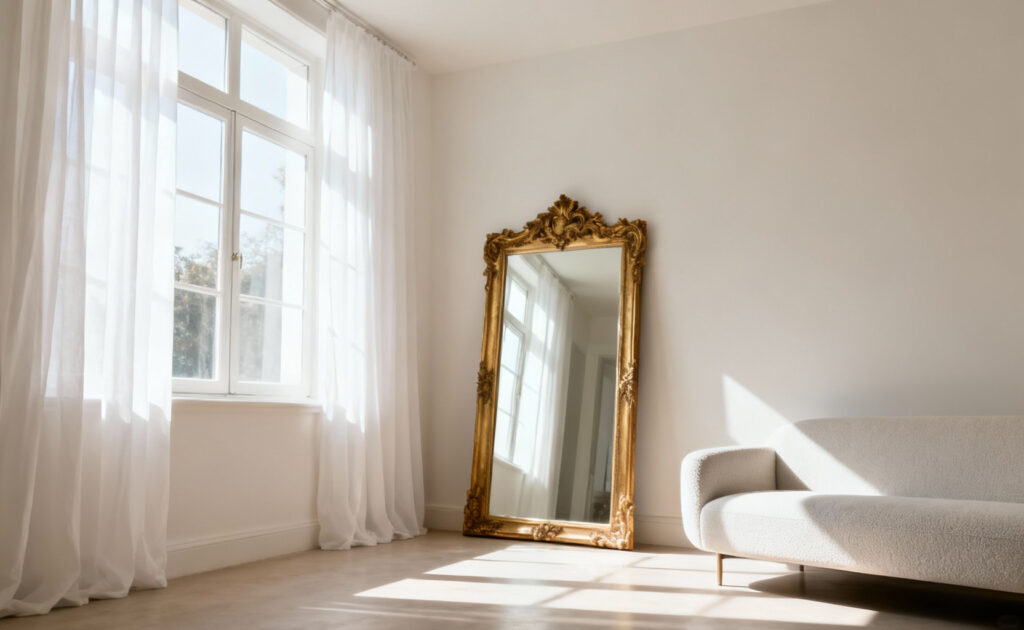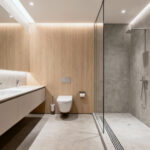The other day, I walked into a new client’s apartment for the first time. Before seeing a single piece of furniture, I felt it—an invisible current in the air, a subtle tension you can’t quite name but can definitely feel in your shoulders. We all know that sensation. That nuanced distinction between a space that truly holds and supports you and one that inadvertently adds to your mental load is exactly what separates intentional, wellness-focused design from accidental accumulation.
As someone who blends a background in interior design with a certification in wellness architecture, I’ve dedicated my career to understanding this subtle language of our homes. Your apartment isn’t just a backdrop; it’s an active participant in your life, profoundly influencing your daily rituals and inner calm. Seeking genuine apartment decor inspiration, then, is about so much more than what’s trending. It’s about consciously crafting a personal sanctuary—a space that breathes with you. This is your guide to doing just that, moving from simple, foundational principles to the nuanced art of creating a home that nurtures your entire being.
Essential Foundations for Mindful Living
Every truly serene home is built on a foundation of core principles that honor our human need for light, nature, and order. Before we can layer in personal style, we must first establish a groundwork of calm. These initial steps are the most powerful, creating an immediate and palpable shift in how your apartment feels.
1. Optimize Natural Light for Enhanced Mood
The most potent tool in wellness design is completely free: daylight. Our bodies are biologically wired to respond to the sun’s cycles, and maximizing your exposure to it can profoundly elevate your mood and energy. Before you do anything else, perform a light audit. Walk through your apartment and ensure every window is clear of obstructions. Pull back heavy drapes and replace them with light-filtering sheers that offer privacy while letting the light pour in.
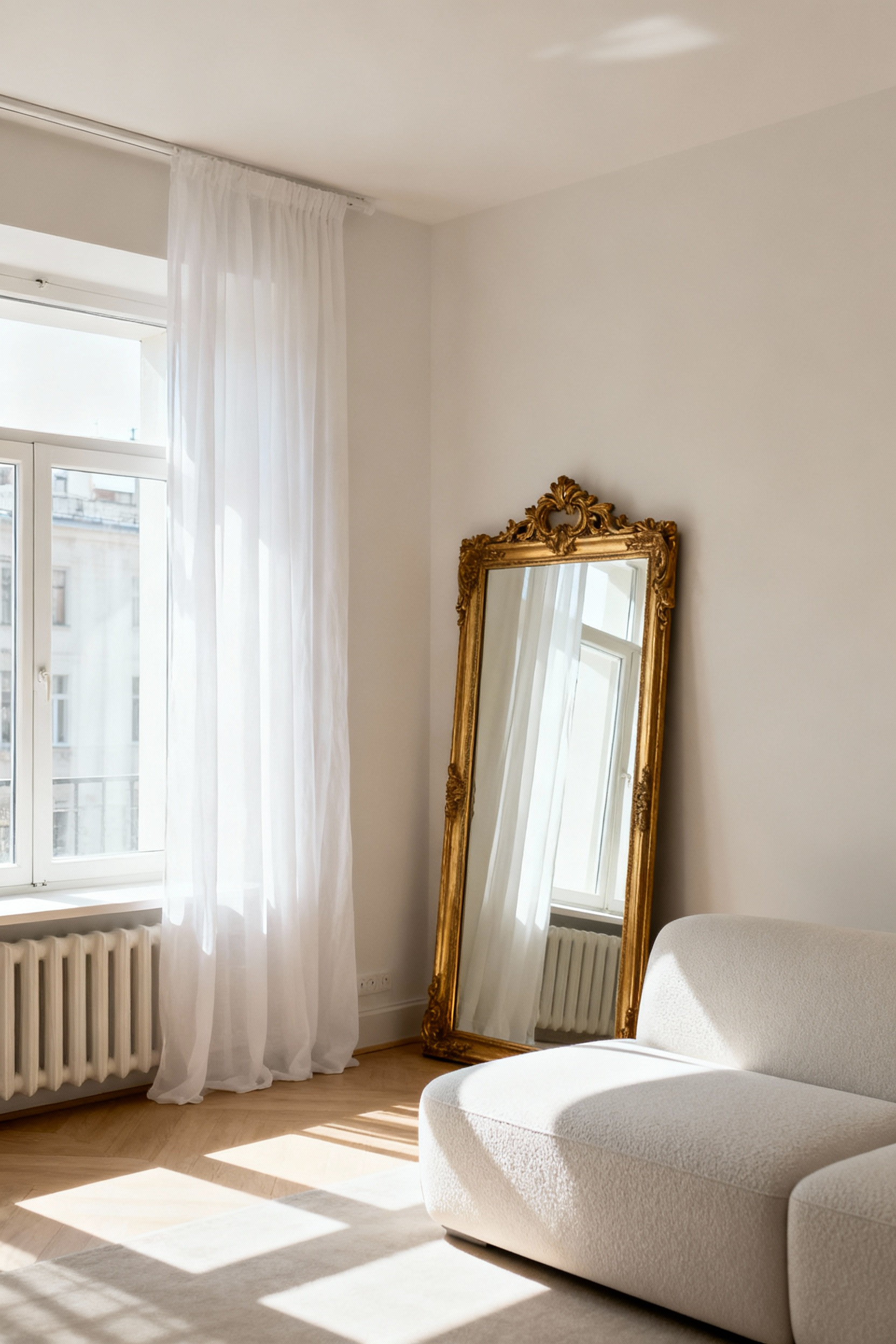
What I tell my clients is that a room’s character is defined by how light moves through it. Once you’ve maximized the source, you can start shaping its path. Place a large mirror opposite your brightest window to essentially double that light source, bouncing it into darker corners. You’ll be amazed at how this simple act can make a small room feel expansive and alive, creating a vibrant canvas for the rest of your design choices.
2. Curate a Calming Color Palette
Color is communication. Long before our conscious mind registers it, the hues surrounding us send signals to our nervous system. For a foundation of calm, start with a palette inspired by the natural world. Think soft whites, warm beiges, gentle grays, and the muted greens and blues of the sea and forest. These colors are inherently restful to the human eye because they are familiar and non-threatening.
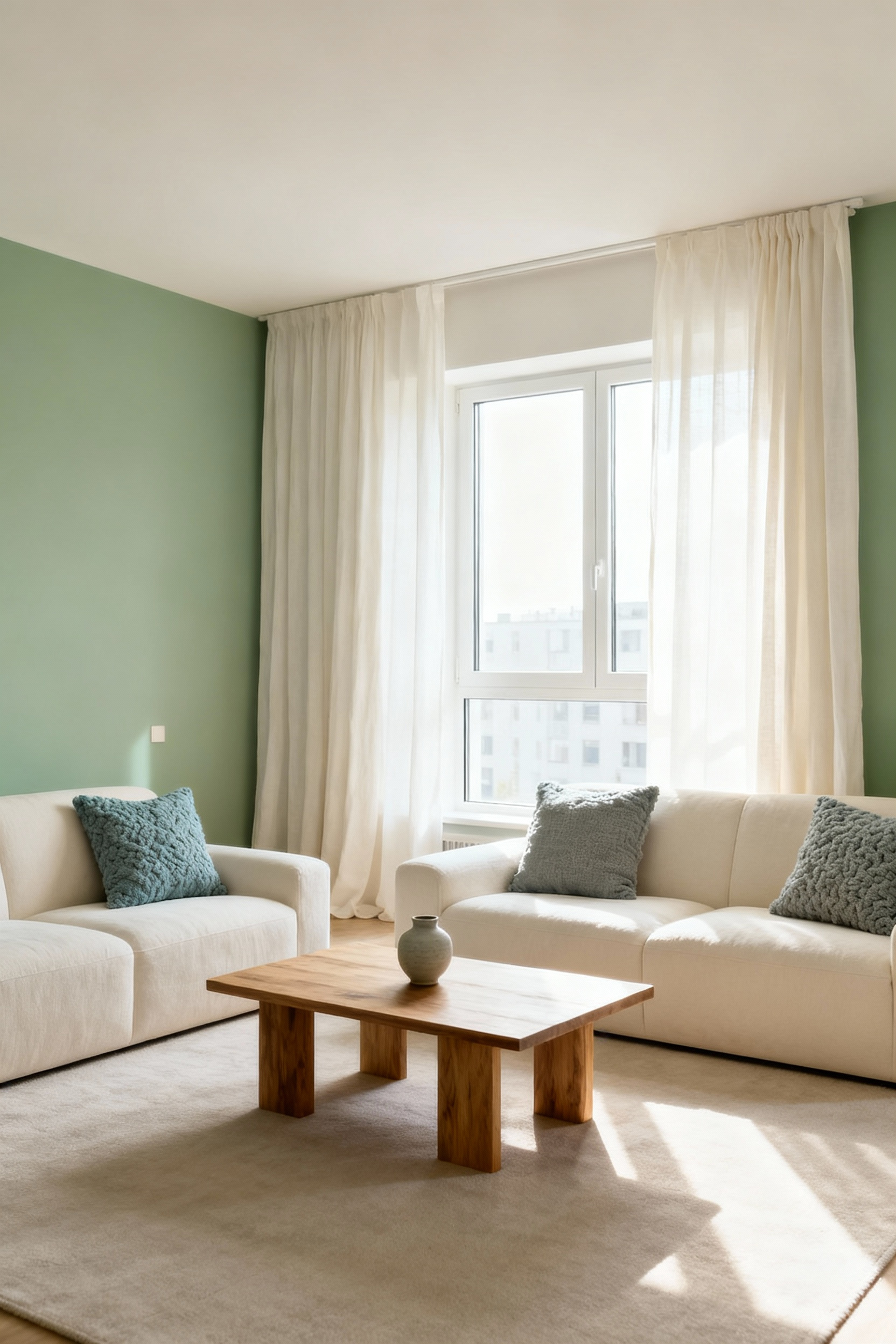
In my wellness design consultant practice, I encourage people to think of their wall color as the backdrop for their life, not the main event. Use these foundational neutrals for large surfaces, then layer in subtle, richer tones through textiles, art, and decor. This approach creates a soothing, cohesive environment that feels intentional rather than chaotic, allowing your most cherished pieces to truly stand out.
3. Declutter with Intention for Mental Clarity
Visual clutter directly translates to mental clutter. Our brains are constantly processing our surroundings, and an overabundance of objects can lead to a state of low-grade, chronic stress. The first step isn’t a massive, overwhelming purge, but one small, intentional act. Choose one surface—your bedside table, a kitchen counter, a single shelf—and remove everything that isn’t beautiful or essential. Feel that tiny sigh of relief? That’s your goal.

True decluttering is less about sterile minimalism and more about conscious curation. It’s a continuous practice of asking, “Does this support the life I want to live?” When every item in your home has a purpose or brings you genuine joy, your space transforms from a storage unit into a sanctuary. It’s a foundational principle of mindful space planning that brings immediate peace.
4. Design an Intentional Entryway for Mindful Transitions
The entryway is the first and last part of your home you experience each day. It’s a critical threshold between the public world and your private sanctuary. Even if you don’t have a formal foyer, you can create one. The key is to establish a “landing strip”—a designated place for the things you carry in and out: keys, mail, bags. A simple wall-mounted hook, a narrow console table, or even a beautiful bowl on a shelf can serve this purpose.
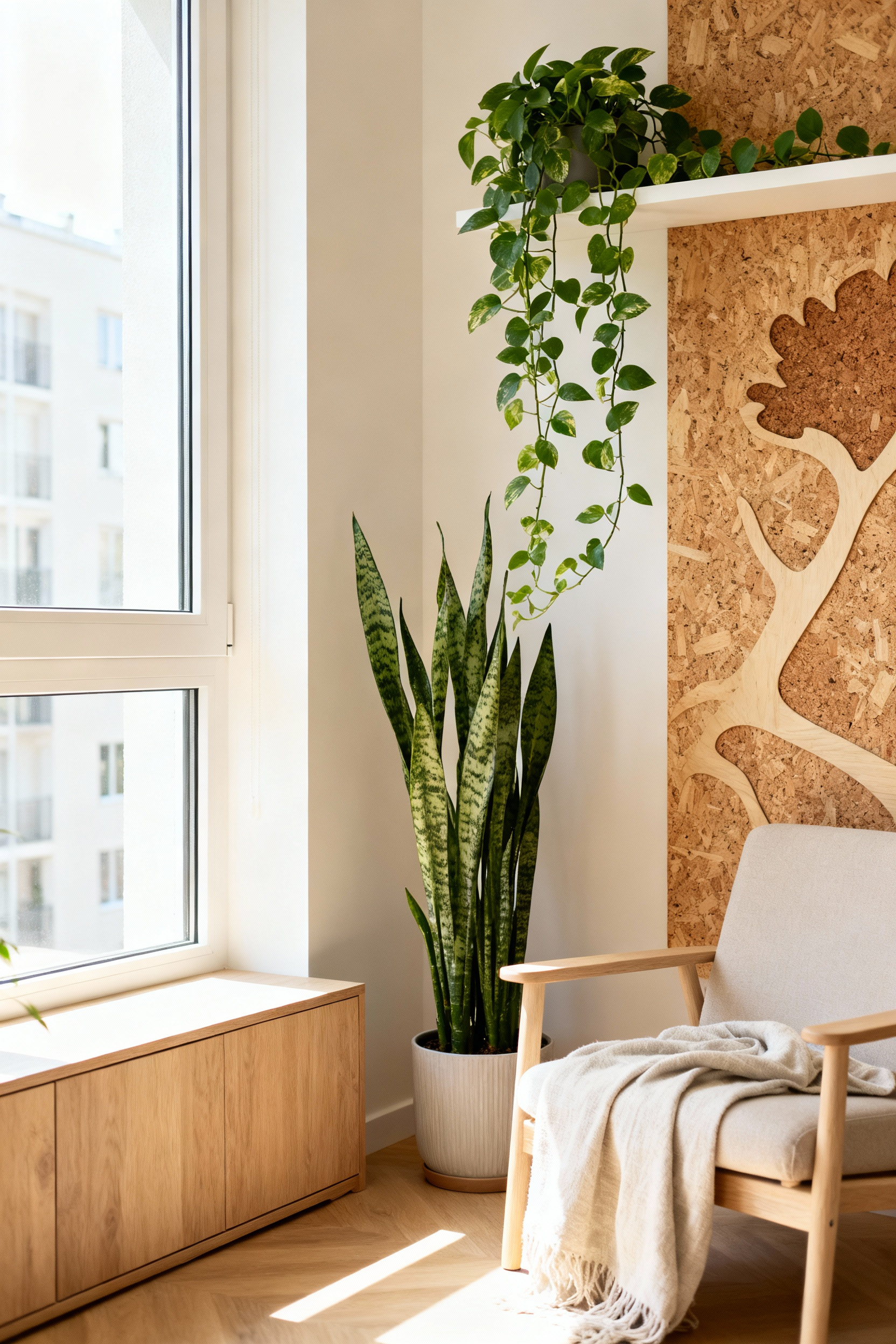
This small zone prevents the chaos of the outside world from spilling into your living space. Years of mindful space planning have taught me this ritual of arrival is vital. By creating an organized and welcoming entry, you give yourself a physical cue to mentally transition—to shed the stress of the day and step fully into the peace of your home. Adding a small plant or a piece of art you love here reinforces that this is a place of refuge.
5. Leverage Biophilic Design for an Indoor Connection to Nature
Biophilia is the innate human desire to connect with nature, and it’s one of the most powerful principles in wellness architecture. You don’t need a jungle to reap the benefits. Start simply by adding a few hardy plants, like a Snake Plant or Pothos, which are not only beautiful but are also incredible air purifiers. Their presence introduces life, organic shape, and vibrant color that synthetic decor can’t replicate.
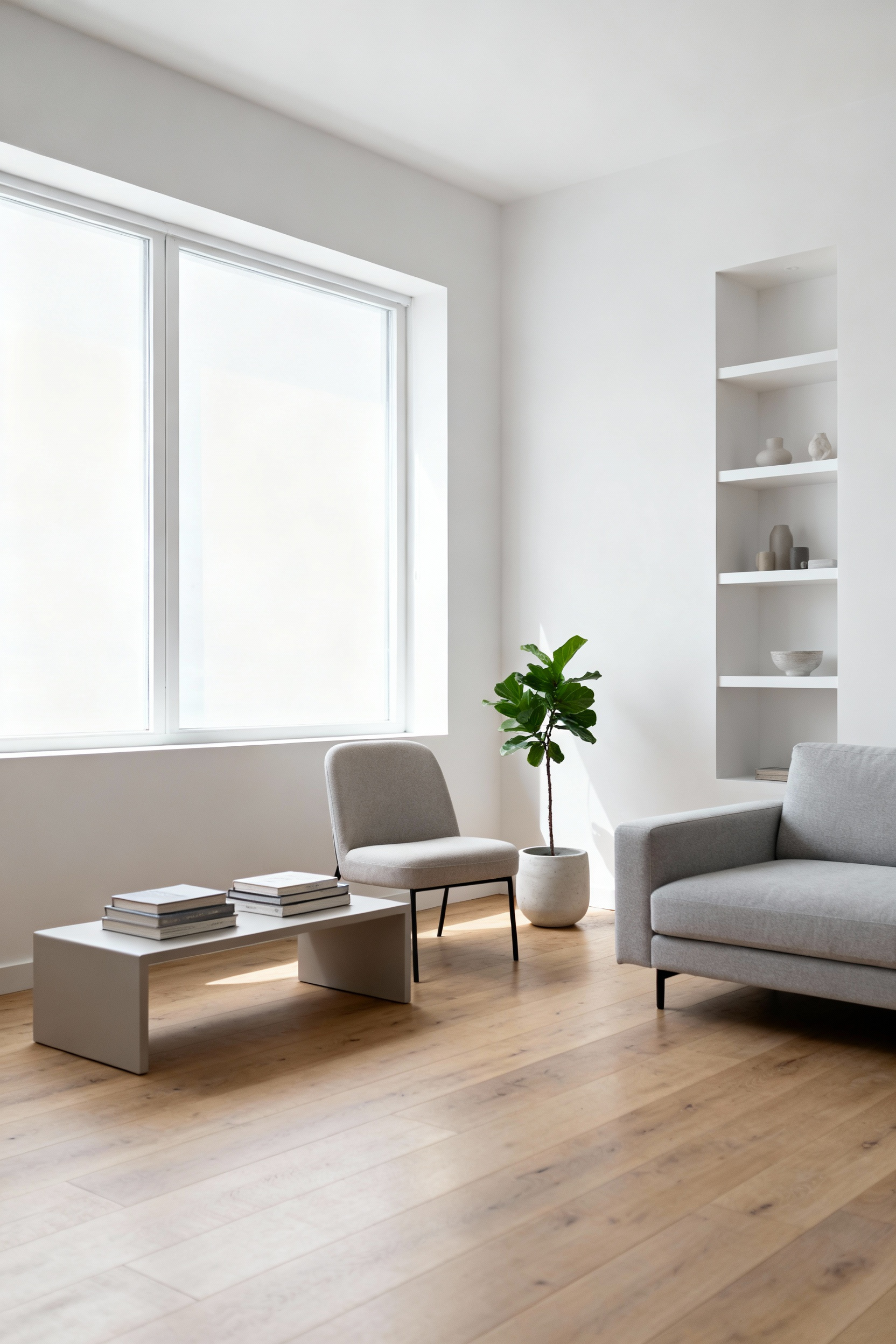
Beyond living plants, you can incorporate nature by choosing materials that come from the earth. Think a wooden side table with a visible grain, a wool throw blanket, linen curtains, or a stone coaster. These natural textures ground us and provide a subtle, tactile connection to the world outside, making our indoor environments feel less artificial and more deeply human.
6. Integrate Tactile Textures for Sensory Comfort
So much of design focuses on the visual, but our sense of touch is deeply tied to our feelings of comfort and safety. A space that looks beautiful but feels cold and hard won’t be a true sanctuary. Intentionally layer in a variety of tactile textures to create sensory richness. A plush rug underfoot, a soft velvet cushion, a chunky knit throw, and smooth ceramic objects all contribute to this landscape.

The key is contrast. The juxtaposition of a rough-hewn wooden bowl on a smooth marble surface, or a soft linen pillow against a leather armchair, creates depth and interest. Running your hand over different surfaces as you move through your day is a subtle form of mindfulness. In my experience, a richly textured home is one that feels welcoming, lived-in, and profoundly comforting.
7. Introduce Soft, Layered Illumination
Nothing drains the soul from a room faster than harsh, singular overhead lighting. Think of lighting in layers: ambient, task, and accent. Ambient light is the general glow, but it should come from multiple sources. A floor lamp in one corner, a table lamp by a sofa, and perhaps a gentle overhead fixture on a dimmer switch all work together to create a soft, enveloping radiance.
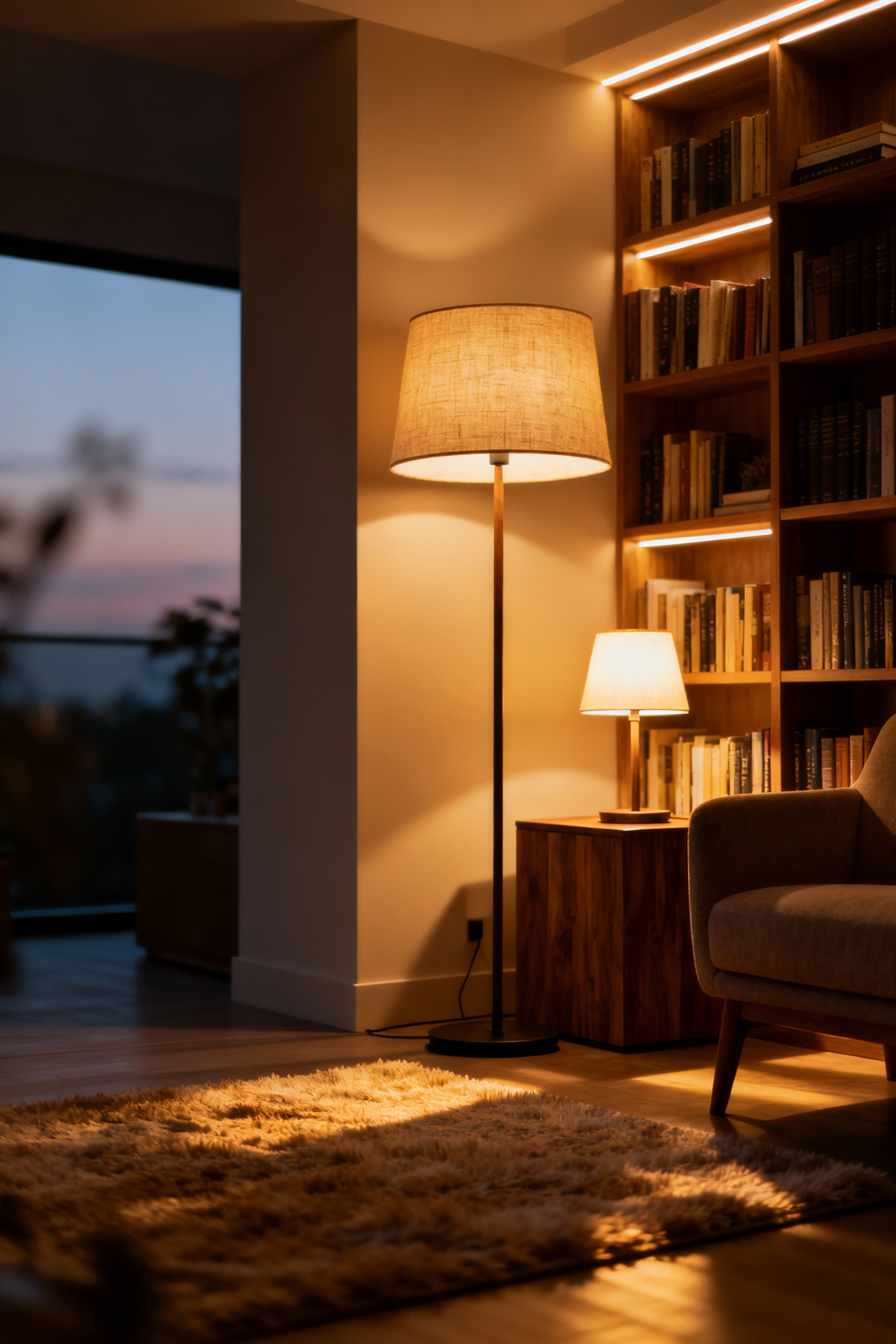
This is where you truly set the mood for your space. Instead of flipping one switch that floods the room, you can curate your light for the moment. Use focused task lighting for reading or cooking, and soft accent lights to highlight a piece of art. Opt for warm-toned bulbs (around 2700K) for your evening lighting to promote relaxation and support your natural circadian rhythms, signaling to your body that it’s time to unwind.
Intermediate Applications for Elevated Well-being
With a calm foundation established, we can begin to layer in more sophisticated concepts. This is where we fine-tune the flow, personality, and energy of your apartment, turning a pleasant space into one that is deeply personal and intuitively functional.
8. Optimize Energy Flow with Feng Shui Principles
You don’t need to be an expert to benefit from the ancient wisdom of Feng Shui. At its heart, it’s the practice of arranging your environment to allow for a positive flow of life force, or chi. The most critical principle is the “commanding position.” This means arranging your bed, desk, and sofa so that you can see the door to the room without being directly in line with it. This placement fosters a subconscious sense of security and control.
From there, consider the flow. Are pathways clear? Can you move easily through your apartment without bumping into things? Obstructed pathways can lead to feelings of stagnation. Clear the way for energy—and you—to move freely. What I love about Feng Shui is that it prompts you to feel the subtle energetics of your space and make intuitive adjustments for harmony.
9. Craft Inviting Layouts for Optimal Flow
A good layout feels effortless. It anticipates your needs and guides you gracefully from one activity to the next. The goal is to create both clear pathways for movement and cozy “destinations” for rest. Arrange furniture to encourage connection. Instead of lining all the seating against the walls, create intimate groupings that face each other, fostering conversation.
Think of negative space—the empty areas—as a luxurious and essential element of your design. Over-crowding a room, even with beautiful things, creates a sense of frantic energy. I’ve learned that allowing for open space gives your eyes a place to rest and your mind the permission to quiet down. This balance between furnished zones and open areas is the key to functional elegance.
10. Personalize Zones for Defined Purpose
In many apartments, one room has to wear many hats. A living room might also be a dining room, home office, and gym. To maintain a sense of order and peace, create defined zones for each primary activity. You can do this visually without putting up walls. An area rug can anchor a living room arrangement, a slim console can define an entryway, and a specific floor lamp can illuminate a reading nook.

This thoughtful delineation sends a clear signal to your brain about the purpose of each space. When you sit in your “work zone,” you’re cued to focus. When you move to your “relaxation zone,” you’re prompted to unwind. This psychological separation is especially vital for remote workers, helping to maintain a healthy boundary between professional and personal life within the same four walls.
11. Weave Your Story into Art & Decor
The most beautiful homes are the ones that tell a story. This is your story. Your decor should be a collection of things that hold meaning for you—not just pieces chosen to fill a space. Display souvenirs from travels, frame a family recipe, hang art that genuinely moves you. These objects are touchstones of your identity and your journey.
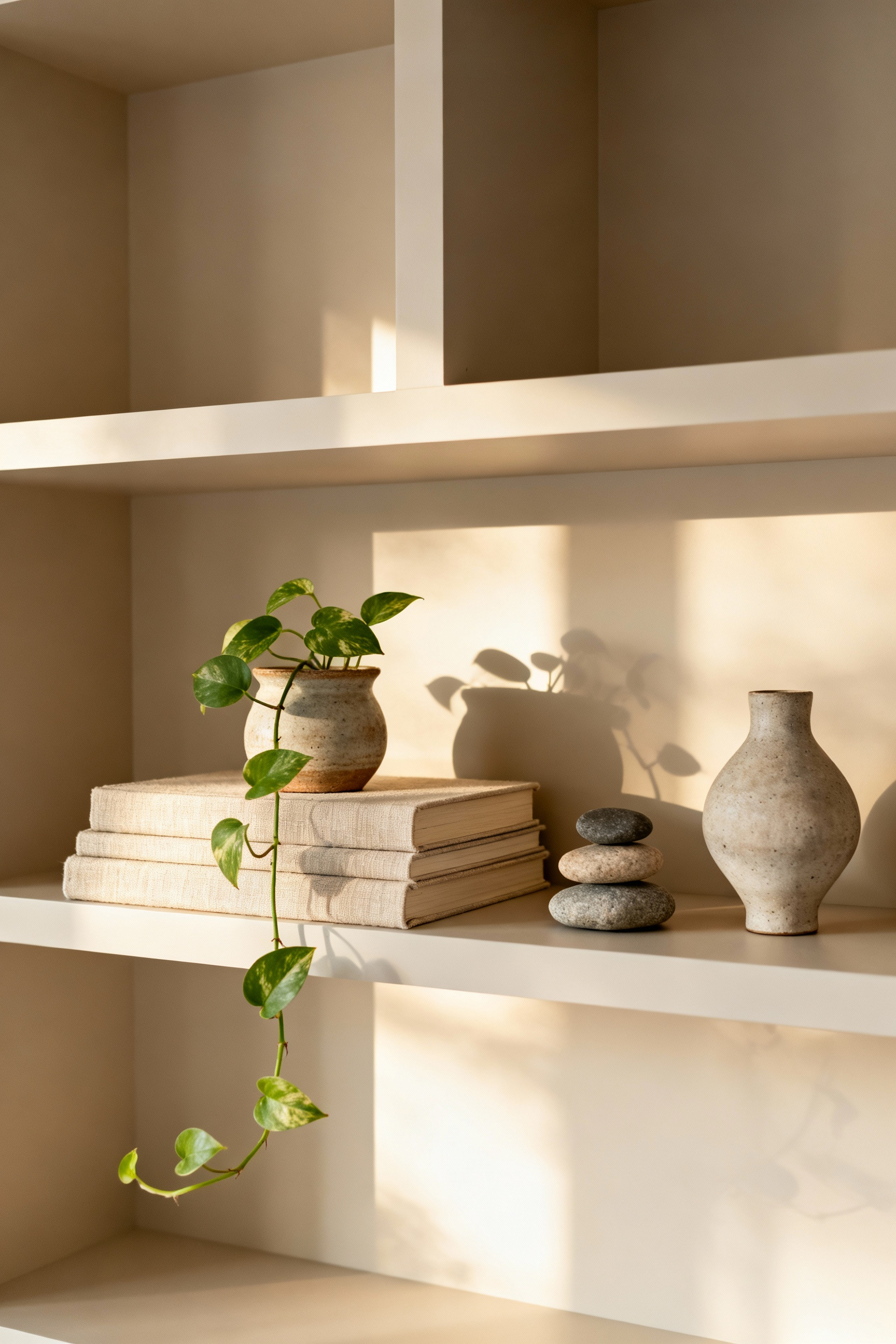
I’ve seen this play out time and again: a room becomes soulful the moment personal artifacts are introduced. Arrange these pieces in thoughtful vignettes—small, curated groupings on a shelf or tabletop. A stack of meaningful books, a candle, a framed photo, and a small natural element can create a powerful little moment that is entirely your own, infusing your apartment with unique character.
12. Style Shelving with Intent
Shelves are so much more than storage; they are an opportunity for expression. Instead of cramming them full, approach them as you would a gallery wall. Vary the orientation of books—some vertical, some stacked horizontally. Leave negative space to allow key objects to shine. Group items in odd numbers, like threes or fives, which is often more visually appealing than even-numbered groupings.

Incorporate a mix of materials: books (your intellectual life), plants (your connection to nature), art (your creativity), and personal mementos (your history). A beautifully styled shelf is a snapshot of who you are. It’s a dynamic display that you can change with the seasons or as your life evolves, making it a living piece of your home’s story.
13. Incorporate Mirrors to Expand Space & Light
Mirrors are masters of illusion and a small apartment’s best friend. Their primary wellness function is to amplify natural light, as we discussed earlier. But they also create a profound sense of expansion. A large floor mirror leaning against a wall can create the illusion of a whole other room, tricking the eye into perceiving more depth and volume.

The secret is what you choose to reflect. Position a mirror to reflect a window, a beautiful piece of art, or the flickering flame of a candle. Don’t place it opposite a cluttered area, as it will only magnify the chaos. By consciously curating the reflection, you can double the beauty in your space and make it feel infinitely more open and bright.
14. Cultivate an Acoustic Retreat
The sound of our environment has a massive impact on our nervous system. In apartments, external noise can be a constant source of stress. You can create a more peaceful soundscape by incorporating soft, sound-absorbing materials. Thick area rugs, heavy curtains, upholstered furniture, and even textile wall hangings can dramatically reduce echo and muffle outside noise.

Think beyond just dampening noise and consider adding gentle, pleasant sounds. A small tabletop water feature can provide a soothing, spa-like burble. Playing soft, ambient music can create a “sound cocoon” that masks more jarring city sounds. Cultivating a peaceful acoustic environment is a subtle but incredibly powerful way to make your apartment a true retreat from the world.
Mastering the Art of a Wellness-Centric Apartment
Mastery is about integration—when these principles are no longer things you do, but are simply part of how you live. It’s about designing a space that is so intuitive and supportive that it fades into the background, allowing you to live your best life effortlessly.
15. Implement Smart Storage for Visual Tranquility
Sustained calm requires systems. Even after an initial declutter, life happens. Smart storage is the key to maintaining that sense of visual peace. This means choosing pieces that work hard for you. Look for ottomans that open to store blankets, coffee tables with drawers, and bed frames with built-in storage.
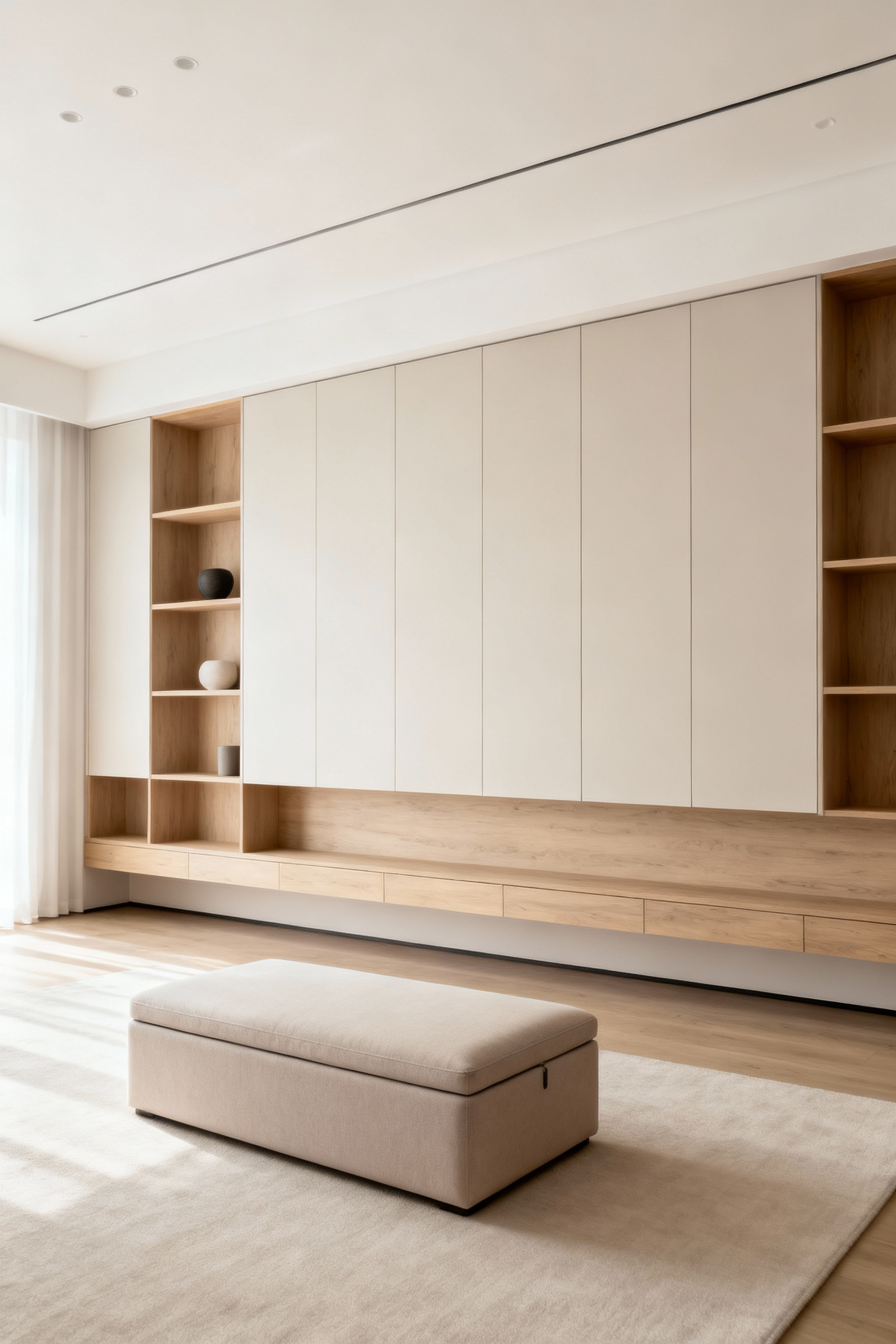
From my work in mindful space planning, I can tell you that the most effective strategy is to go vertical. Tall, narrow shelving units draw the eye upward and maximize storage without eating up precious floor space. Use beautiful baskets and boxes to conceal less sightly items. When everything has a designated home, tidying up becomes a simple, quick ritual rather than a monumental chore, preserving the tranquility you’ve worked to create.
16. Utilize Multi-Functional Furniture for Seamless Adaptability
In an apartment, every square foot counts. Multi-functional furniture isn’t just a space-saving trick; it’s a philosophy of adaptable living. It allows your space to transform to meet your needs in the moment. A console table can expand to become a dining table for six. A stylish daybed serves as both a sofa and a guest bed. A sleek ladder desk provides a workspace without the visual weight of a traditional office setup.

Choosing these clever, hard-working pieces allows a single room to serve multiple functions with grace and elegance. Your home becomes a dynamic environment that can shift from a quiet workspace during the day to a cozy entertaining spot at night. This adaptability is the ultimate luxury in modern apartment living.
17. Embrace Scent as a Sensory Layer
Our sense of smell is directly linked to the memory and emotion centers of our brain, making scent one of the most powerful and immediate ways to shape the feeling of a space. This isn’t about masking odors with artificial air fresheners. It’s about consciously layering natural, subtle aromas that signal calm and comfort.
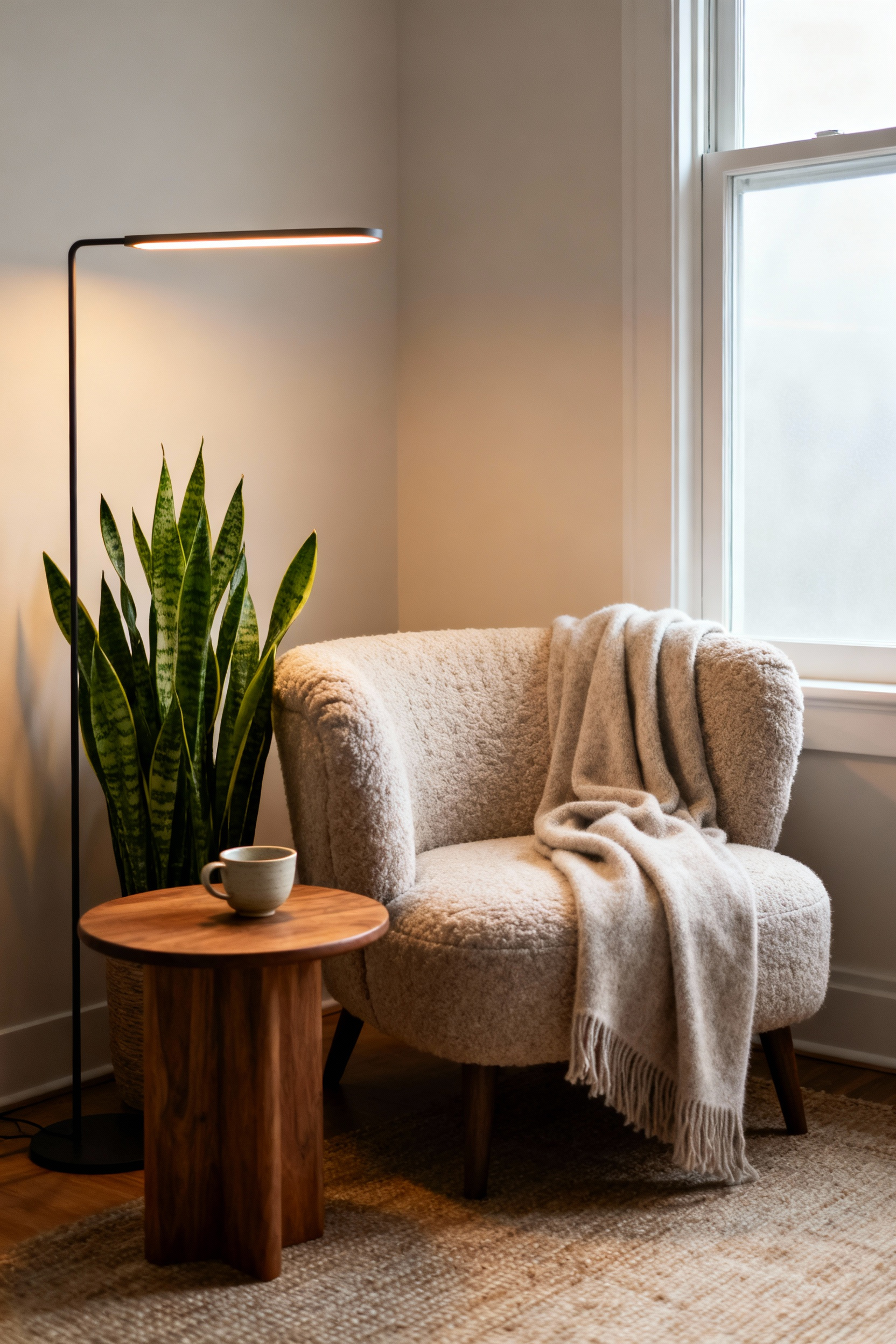
Use an essential oil diffuser with pure, therapeutic-grade oils like lavender for relaxation, or eucalyptus for a clean, energizing feel. Simmer a pot of water with citrus peels and cinnamon sticks on the stove. Light a soy or beeswax candle with a natural fragrance. Curating an olfactory signature for your home adds an invisible but deeply felt layer of care and intention.
18. Establish a Dedicated Sanctuary Space
Everyone needs a space—no matter how small—that is dedicated solely to their rest and replenishment. It could be a comfortable armchair in a quiet corner, a meditation cushion by a window, or even just one end of your sofa. The key is to claim this spot as your own personal sanctuary and protect its purpose fiercely.
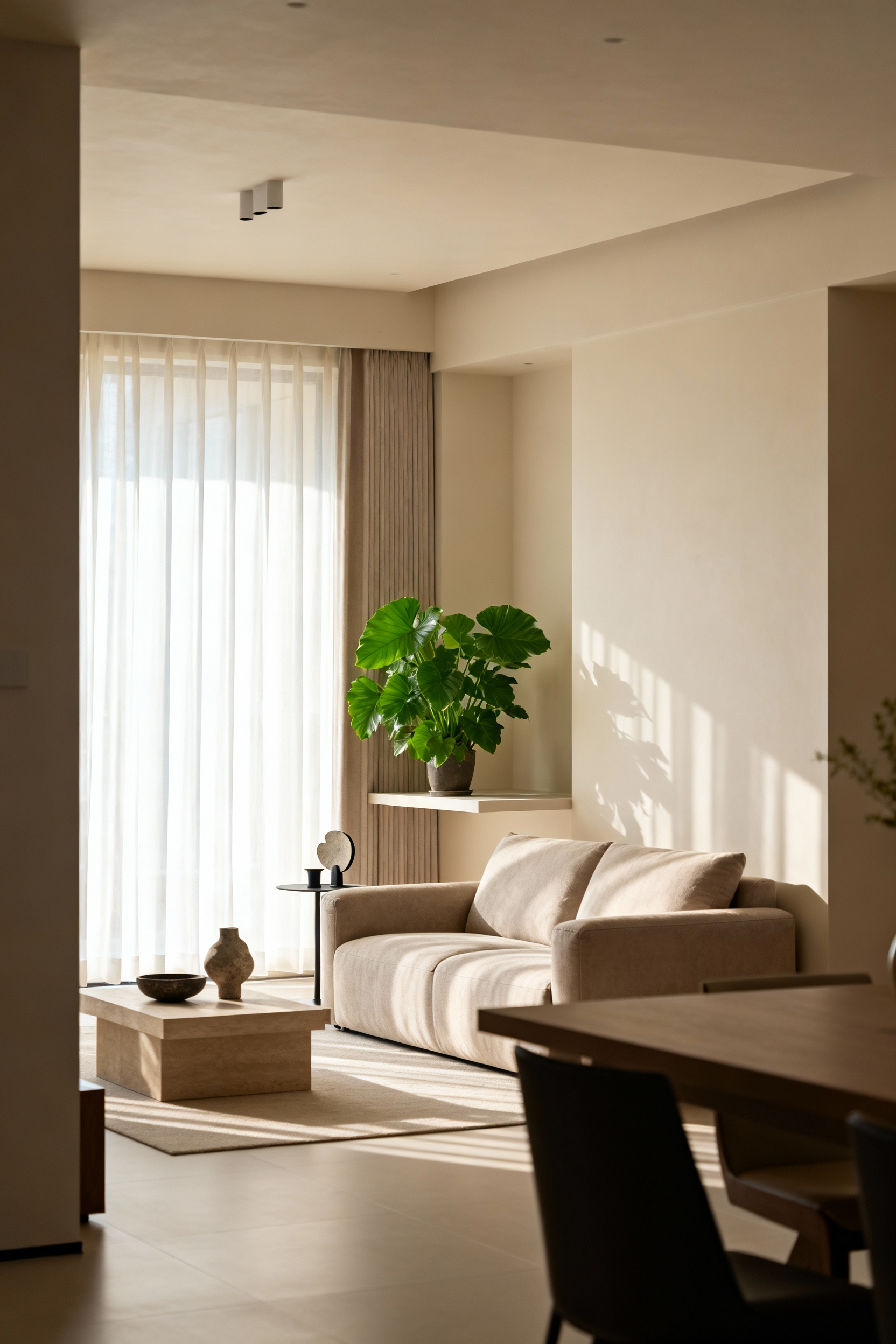
This is not a multi-purpose zone. This is where you go to read, to journal, to meditate, or simply to breathe. Furnish it with your most comforting things: the softest blanket, your favorite mug, a special photo. Having this dedicated refuge creates a powerful psychological anchor, a reliable place you can retreat to when you need to reconnect with yourself and recharge.
19. Curate a Tech-Free Wind-Down Zone
Quality sleep is the bedrock of well-being, and our hyper-connected lives are constantly undermining it. The blue light from screens suppresses melatonin production, making it harder to fall asleep. To combat this, designate your bedroom—or at least the area around your bed—as a strict tech-free zone for at least an hour before sleep.
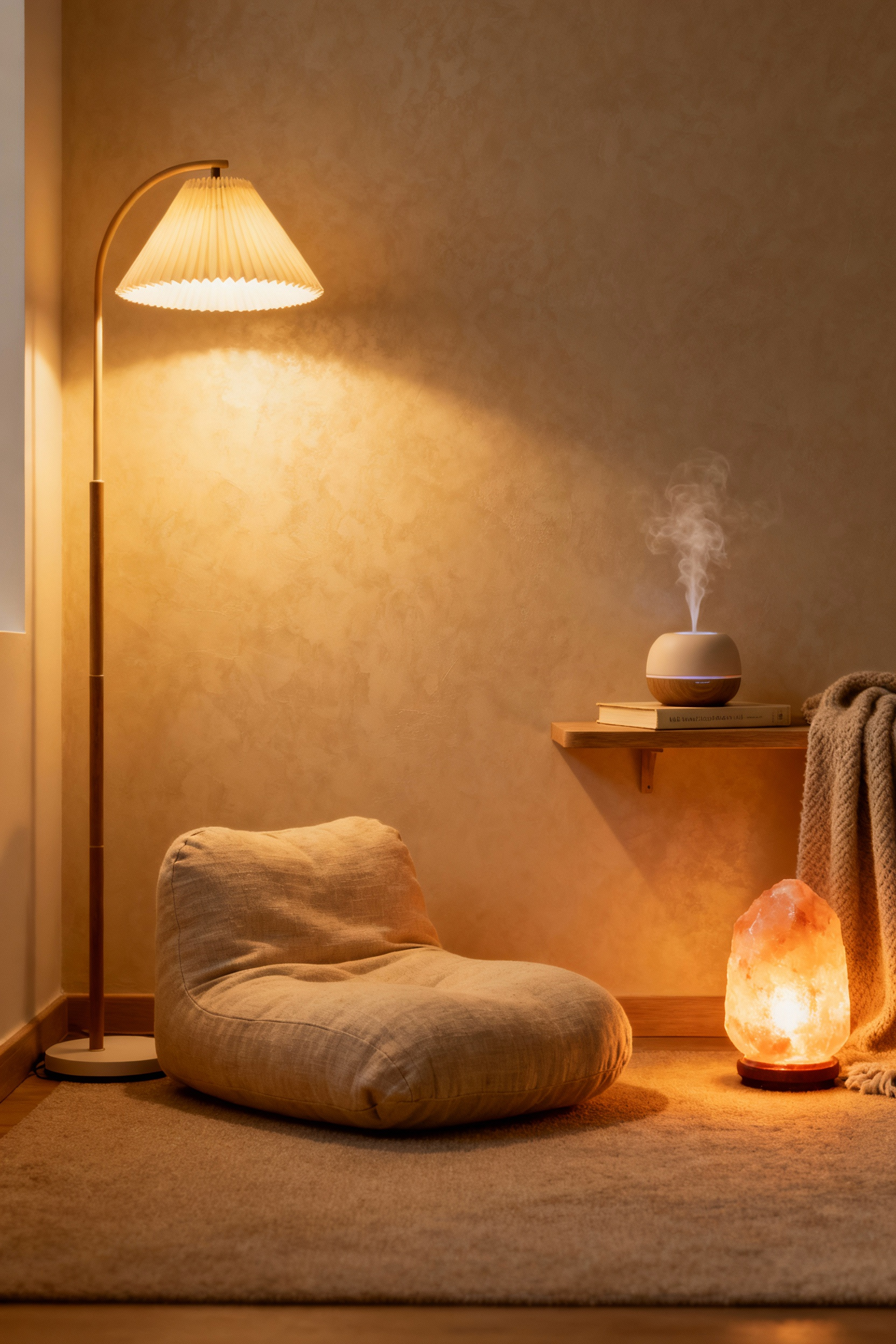
Replace screen time with a gentle wind-down ritual. Read a physical book. Journal. Listen to calming music. I learned this when designing restorative spaces: the transition to sleep needs to be a gradual slope, not a cliff. Replace the harsh blue light of your phone with a soft, warm-toned bedside lamp. This simple environmental shift sends a powerful signal to your body and mind that it’s time to prepare for deep, restorative rest.
20. Foster Connection with Open, Inviting Spaces
While we need our private sanctuaries, we are also social creatures who thrive on connection. A wellness-centric home supports this, too. Design your main living area to be a place of warmth and welcome. Flexible seating—like floor cushions or a moveable ottoman—can easily accommodate guests. Keep cozy throws accessible. Create an atmosphere that says, “Stay a while.”

A home that is good for you is also a home that can be easily shared. It’s a space that is both a personal retreat and a vessel for community. By creating an environment that feels open, comfortable, and inviting, you’re not only nurturing yourself but also creating a space where meaningful connections with others can flourish.
Conclusion
As we’ve journeyed through these ideas, it’s become clear that creating a well-being-focused home is an act of deep self-awareness. It is the art of tuning into what truly nourishes you and translating that into your physical environment. True apartment decor inspiration isn’t about chasing a fleeting aesthetic; it’s about crafting a space that functions as a caring partner in your life—a place that calms, restores, and reflects the most centered version of yourself.
Don’t feel you have to do it all at once. Begin with one simple change. Notice how it feels. The process of cultivating a sanctuary is a gentle evolution, not a grand renovation. Let your intuition be your guide. Your apartment is your canvas. By infusing it with intention, you are doing more than just decorating—you are building a resilient foundation for a more serene, joyful, and authentic life.
